The ABC of medical emergencies: How (not) to help victims at blast sites
Experts warn mishandling a seemingly stable patient can have consequences such as paralysis or amputation.
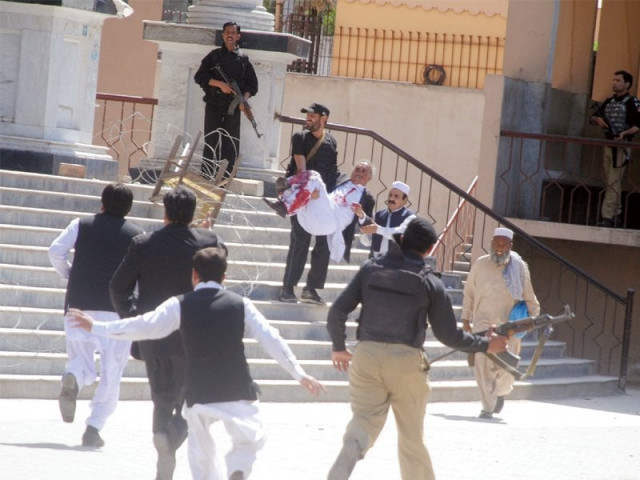
Victims of the March 18 attack on the Judicial Complex in Peshawar can be seen being carried by untrained volunteers without the aid of stretchers or medics. Four people lost their lives and 47 were injured in the suicide and gun attack. PHOTOS: FILE
Recent bomb explosions in Khyber-Pakhtunkhwa – in Peshawar in particular – have seen many of the injured transported to hospitals by concerned citizens instead of ambulances. The sense of urgency felt by those present at a blast site is easy to comprehend, yet moving an injured person without the proper tools and medical training often causes irreparable damage.
Medical experts confirm victims who have been brought to the hospital in an ad hoc manner are at risk of developing more complications. A concerned onlooker or even an ill-trained medic can easily do more harm than good.
“Chances are, if a victim is shifted by an inexperienced rescue worker, medical complications which initially were categorised at 25% will worsen to 70-75%. The most sensitive injuries are spinal ones, and those are the ones people really don’t know how to handle,” Dr Haider Shah of the Lady Reading Hospital told The Express Tribune.
The doctor, who has operated on several blast victims, points out medics who treat casualties in the field also need to provide notes to doctors when they bring the patient in – if any precautionary measures were taken to stabilise the victim or if the victim presented certain symptoms. Without these notes, the doctor can possibly make things worse.

Spinal injuries are often hard for the layman to spot and for the victim to point out; the pain they might feel in their leg could be the result of trauma in the spinal cord. Paraplegic Centre Chief Executive Officer (CEO) Syed Muhammad Illyas reiterated Dr Shah’s concerns and pointed out the potential for disaster in mishandling a victim with any spinal injury.
What might start of as slight damage could result in permanent paralysis if not handled properly on site and en route to the hospital, said Illyas.
In his view, “The head of the injured should be immobilised. The person should be restrained so they do not move any part of the body in order to prevent unseen complications.”
Citing examples from the centre, the CEO said inexperienced rescues have resulted in patients who, at the incident site, could move their limbs but worsened by the time they reached the hospital.
Dr Amir Zab, a physiotherapist, pointed out the recognised protocol is to shift the victim on to a spinal board and treat on the spot by trained medics. However, here rescue workers – trained or enthusiastic onlookers – just end up making things worse. “Your hand may be slightly damaged as a result of the blast, but if someone inexperienced deals with you in the field, the doctor might just have to amputate the hand when you eventually reach a medical facility.”
The moral responders
As it so happens, the first responder at accidents and blast sites in Pakistan is the concerned passerby, the curious onlooker. And in their desire to help, they do not wait for the professionals to reach the scene.
It has been observed on many an occasion, a victim of a road traffic accident or a bomb blast is hauled by two people onto the unsanitary floor of the car and whisked away without a second thought.
Muhammad Ibrar was at a juice shop a few yards away from the blast which occurred on Arbab Road on April 29 – the explosion killed nine people.
“We rushed to the spot because the injured were screaming for help and we could not bear to see people in such pain, it became our moral responsibility. We put the injured in our vehicles because the ambulances reach after 7 to 8 minutes.”
Ibrar remembered the bodies of the injured were terribly mutilated, with limbs barely attached to the body and were rushed to the Khyber Teaching Hospital in taxis.
When asked if he knew how to handle victims in such situations, Ibrar replied in ignorance, “at such moments, no one is an expert.”
The ABC of trauma
According to medical experts, three things need to be checked in the field immediately. In trauma assessment, they call these the ABC of triage.
Checking the Airway to see there are no obstructions, foreign objects, and lifting the chin to establish a clear airway but all the while ensuring the cervical spine (the neck) is only moved if absolutely essential.
Making sure the victim is Breathing – evaluating breathing by watching chest movement, hearing lung sounds and if needed, providing the person with oxygen.
Then ensuring blood Circulation by appraising the victim’s level of consciousness, the pallor of their skin, their pulse and then controlling bleeds. This could require intravenous fluids and other medical interventions.
As can be seen, ABC can only be done by trained medics and without checking essentials, a seemingly stable victim could take a turn for the worse, or/and die of numerous causes, including internal bleeding.
Published in The Express Tribune, June 28th, 2013.

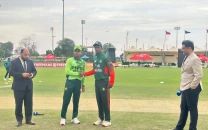
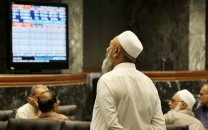

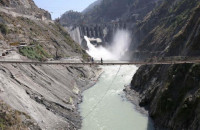

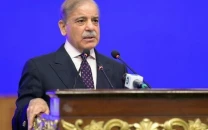


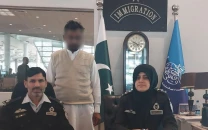

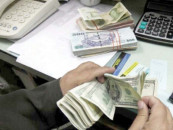







COMMENTS
Comments are moderated and generally will be posted if they are on-topic and not abusive.
For more information, please see our Comments FAQ